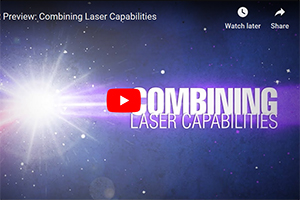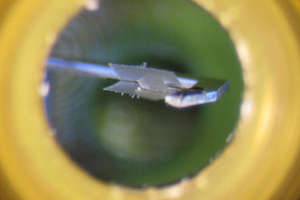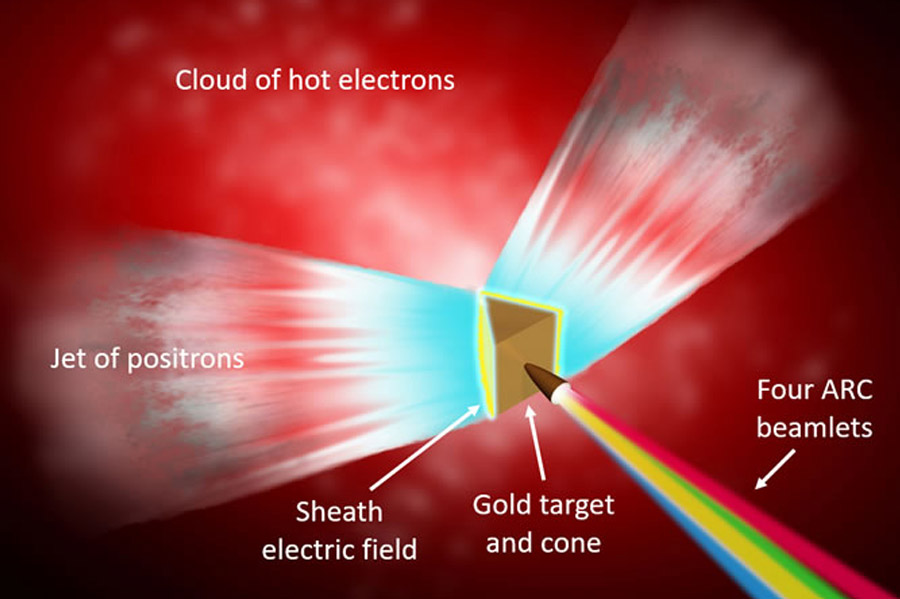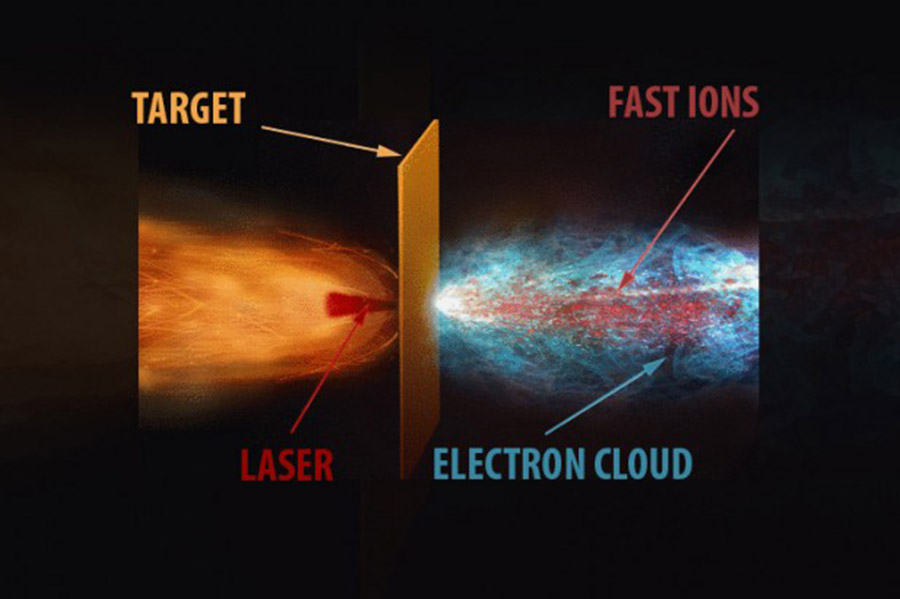Advanced Radiographic Capability (ARC) Laser
Two World-Class Lasers Combine to Power Applications
Previously Livermore’s Petawatt laser was built into a beamline of the Nova laser. Today, ARC follows the same "laser within a laser" strategy. The most energetic short-pulse laser in the world, ARC resides within NIF—the most energetic of all the world's lasers.
Previously Livermore’s Petawatt laser was built into a beamline of the Nova laser. Today, ARC follows the same "laser within a laser" strategy. The most energetic short-pulse laser in the world, ARC resides within NIF—the most energetic of all the world's lasers.
VIDEO: Combining Laser Capabilities
In this video, Research Scientist David Martinez explains how merging the Advanced Radiographic Capability laser, the most energetic short-pulse laser in the world, into the National Ignition Facility’s laser enables researchers uncover the extremes of plasma and fusion physics.
In this video, Research Scientist David Martinez explains how merging the Advanced Radiographic Capability laser, the most energetic short-pulse laser in the world, into the National Ignition Facility’s laser enables researchers uncover the extremes of plasma and fusion physics.
Commentary by Jeff Wisoff: Emphasis on Learning Empowers the Laboratory's Lasers
NIF, a laser the size of three football fields, creates conditions more extreme than those present at the center of the Sun. To build the largest and most energetic laser in world, capable of operating within precise microscopic realms and billionths-of-a-second timescales, required a remarkable series of achievements in design and engineering.
NIF, a laser the size of three football fields, creates conditions more extreme than those present at the center of the Sun. To build the largest and most energetic laser in world, capable of operating within precise microscopic realms and billionths-of-a-second timescales, required a remarkable series of achievements in design and engineering.
NIF Creates Matter and Antimatter from Light
For the first time at NIF, positrons—the antimatter "twins" of electrons—have been created and detected by LLNL researchers. Performed in May, the Discovery Science experiments showed that positron-electron pairs traveling at near light speed can be produced on NIF’s ARC using a new specially-designed plasma lens to increase the laser’s intensity.
For the first time at NIF, positrons—the antimatter "twins" of electrons—have been created and detected by LLNL researchers. Performed in May, the Discovery Science experiments showed that positron-electron pairs traveling at near light speed can be produced on NIF’s ARC using a new specially-designed plasma lens to increase the laser’s intensity.
A Powerful New Source of High-Energy Protons
Nearly 20 years ago, researchers conducting experiments on LLNL’s Nova Petawatt laser system—the world’s first quadrillion-watt laser—discovered that when the system’s intense short-pulse laser beams struck a thin foil target, an unexpected torrent of high-energy electrons and protons streamed off the back of the target.
Nearly 20 years ago, researchers conducting experiments on LLNL’s Nova Petawatt laser system—the world’s first quadrillion-watt laser—discovered that when the system’s intense short-pulse laser beams struck a thin foil target, an unexpected torrent of high-energy electrons and protons streamed off the back of the target.
More Information
“ARC Comes into Focus,” Science & Technology Review (December 2011)








